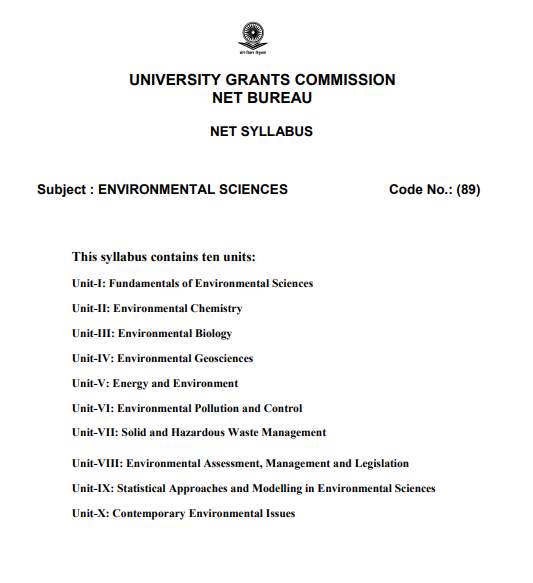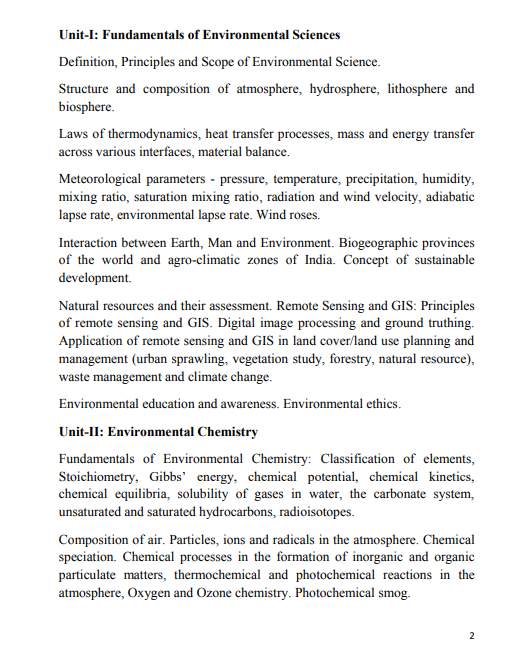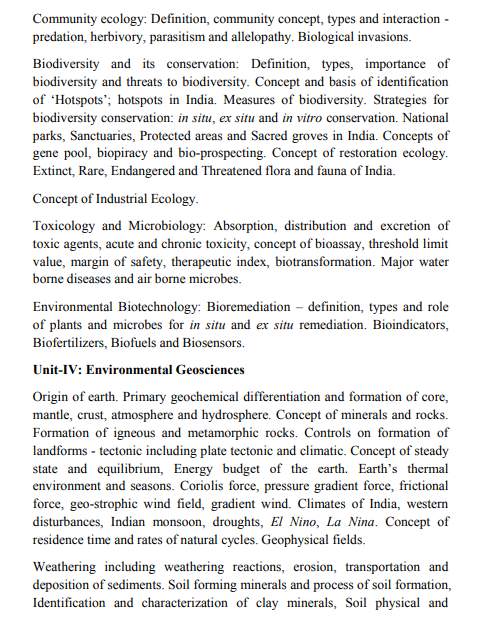|
#7
23rd November 2019, 08:33 AM
| |||
| |||
| Re: NET Exam Syllabus for Botany
The syllabus of NET Mains Subject - Environmental Sciences is as follows: NET SYLLABUS Subject : ENVIRONMENTAL SCIENCES Unit-I: Fundamentals of Environmental Sciences Definition, Principles and Scope of Environmental Science. Structure and composition of atmosphere, hydrosphere, lithosphere and biosphere. Laws of thermodynamics, heat transfer processes, mass and energy transfer across various interfaces, material balance. Meteorological parameters - pressure, temperature, precipitation, humidity, mixing ratio, saturation mixing ratio, radiation and wind velocity, adiabatic lapse rate, environmental lapse rate. Wind roses. Interaction between Earth, Man and Environment. Biogeographic provinces of the world and agro-climatic zones of India. Concept of sustainable development. Natural resources and their assessment. Remote Sensing and GIS: Principles of remote sensing and GIS. Digital image processing and ground truthing. Application of remote sensing and GIS in land cover/land use planning and management (urban sprawling, vegetation study, forestry, natural resource), waste management and climate change. Environmental education and awareness. Environmental ethics. Unit-II: Environmental Chemistry Fundamentals of Environmental Chemistry: Classification of elements, Stoichiometry, Gibbs’ energy, chemical potential, chemical kinetics, chemical equilibria, solubility of gases in water, the carbonate system, unsaturated and saturated hydrocarbons, radioisotopes. Composition of air. Particles, ions and radicals in the atmosphere. Chemical speciation. Chemical processes in the formation of inorganic and organic particulate matters, thermochemical and photochemical reactions in the atmosphere, Oxygen and Ozone chemistry. Photochemical smog. Hydrological cycle. Water as a universal solvent. Concept of DO, BOD and COD. Sedimentation, coagulation, flocculation, filtration, pH and Redox potential (Eh). Inorganic and organic components of soils. Biogeochemical cycles – nitrogen, carbon, phosphorus and sulphur. Toxic chemicals: Pesticides and their classification and effects. Biochemical aspects of heavy metals (Hg, Cd, Pb, Cr) and metalloids (As, Se). CO, O3, PAN, VOC and POP. Carcinogens in the air. Principles of analytical methods: Titrimetry, Gravimetry, Bomb Calorimetry, Chromatography (Paper Chromatography, TLC, GC and HPLC), Flame photometry, Spectrophotometry (UV-VIS, AAS, ICP-AES, ICP-MS), Electrophoresis, XRF, XRD, NMR, FTIR, GC-MS, SEM, TEM. Syllabus of NET Mains Subject - Environmental Sciences     |
